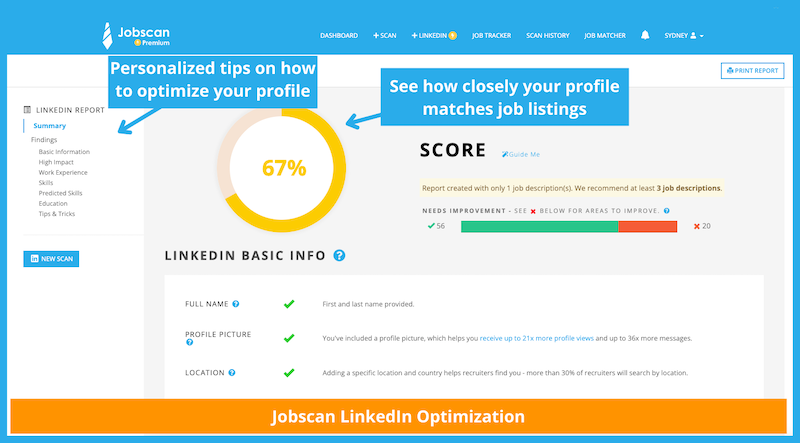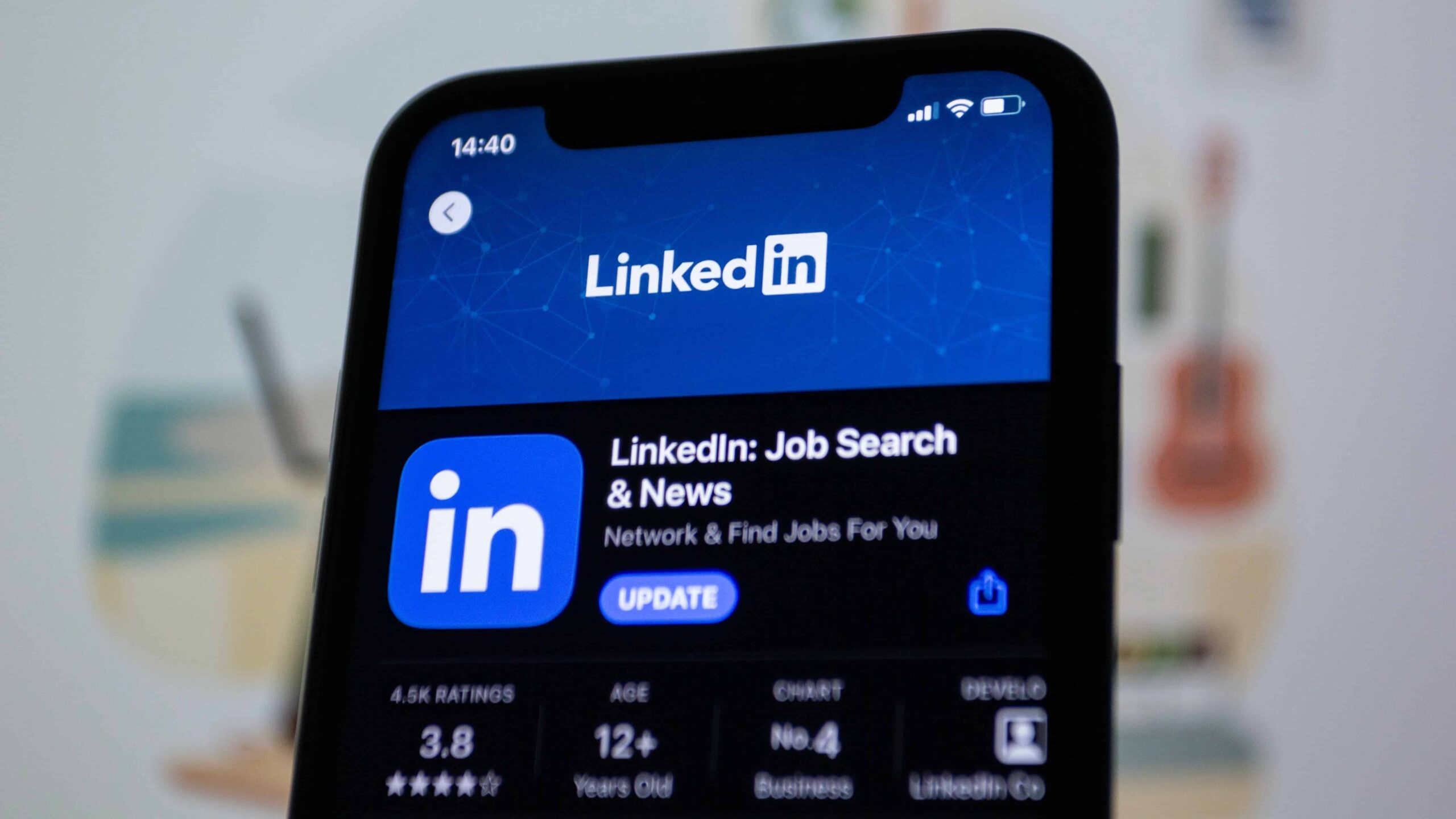Your LinkedIn profile picture may be a tiny circle on your profile, but it’s one of the first things recruiters notice. In fact, profiles with a profile picture are 14 times more likely to get noticed than those without one.
What’s more, one survey conducted among over 200 HR professionals found that 70 percent of recruiters would turn down a candidate based on their LinkedIn profile picture alone. And candidates who upload an attractive profile picture receive 36 times more messages!
So if your profile picture is unprofessional, blurry, or, worse, non-existent, it’s time to take that tiny space in your profile seriously and replace your old photo with an improved, professional-looking one.
Professional headshots are the ideal choice for your LinkedIn profile, but if you don’t have one or prefer not to spend money, here are ten ways you can take your own profile picture that makes the right impression.
Find a camera or a smartphone, and let’s get started!
Table of Contents
- 1. Take your picture in soft, natural lighting
- 2. Light up your photo with a smile
- 3. Dress the part
- 4. Look like yourself
- 5. Choose the right background
- 6. Get someone else to take your photo
- 7. Look at the camera
- 8. Do away with distractions
- 9. Strike a pose
- 10. Optimize your LinkedIn profile
- FAQs
1. Take your picture in soft, natural lighting
When it comes to a good photo, lighting is everything. Good lighting can not only help you look your best, but it can also make your picture look professional.
The best and cheapest way to achieve great lighting is to take your photo in natural light, particularly during the golden hour (the hour shortly after sunrise or before sunset).
Position yourself near a light source, like a wide-open window, to illuminate your face.
You might have to do several trial shots to figure out which angles work best. But you’ll know when you’ve found the right angle when the lighting is flattering.
Here are other tips on lighting to take note of:
- Don’t take your photo in direct lighting. Harsh, direct lighting can result in blown-out highlights and unflattering shadows.
- Use a ring light. Ring lights are great for beauty shots that make your eyes pop and even reduce the appearance of blemishes and wrinkles.
- Don’t shoot with fluorescent lighting. Whatever you do, don’t go with fluorescent lighting. Like direct lighting, it can make your photo look splotchy and unflattering.

2. Light up your photo with a smile
Your best accessory is your smile. No matter what industry you’re in, a smile is a great way to exude confidence, allow your personality to shine through, and even get people to like you.
In fact, based on a study done on over 800 profile photos, a smile can make you look competent and likable. But how you smile matters too!
Based on the study, the best way to exude the right balance between likability and confidence is to smile with your teeth showing. Overdoing it by laughing, however, can negatively impact the way people perceive your competence and influence.
Still, how you present yourself should depend on the industry you’re in or the culture that you want to be part of. If you’re trying to attract young, energetic, hyped-up groups that are big on personality and charisma, a wide-open smile might just do the trick!
Another study showed that hiring managers make assumptions about your competence based on your photo. This happens in less than 100 milliseconds.
So make sure your LinkedIn profile picture depicts competence, professionalism, and leaves a strong first impression.
The best news? You don’t need a professional photographer to do this! You only need your camera, some preparation, and a handful of useful tips to create a professional LinkedIn profile picture without paying for headshots.

3. Dress the part
Remember that your headshot for LinkedIn should show you as a competent professional that belongs in your chosen niche, so dress the part! Ideally, you should be wearing something that you would wear to work.
If you work in tech, for instance, you may do away with the suit-and-tie and don a more casual button-down instead. If you’re targeting managerial roles, however, or are looking to land a job at a company with a more formal work environment, you might want to dress up to get noticed by the right people.
The key is to look presentable, clean, and professional.
Here are other tips to help you dress your best:
- Keep accessories at a minimum. Don’t over-accessorize. It can be distracting and take the focus away from your face.
- Wear solid colors. Solid colors can provide a nice contrast and make your photo pop.
- Don’t overdo your make-up. Use make-up to enhance your appearance, but keep it looking natural. Your photo should still look like you!

4. Look like yourself
Your profile picture on LinkedIn should show the most recent version of yourself. For example, take one of yourself in glasses if you’ve recently taken to wearing them.
This also means that if you’ve recently made drastic changes in your appearance, it’s time to update your profile picture to reflect what you currently look like.
Updating your picture will help recruiters recognize you instantly when you show up for an interview. Imagine the confusion when they see you and you look nothing like your picture!
If you’re editing your photo, use a very light hand. Any edits you make should only help enhance the photo’s quality, like its brightness, and not alter your appearance.

5. Choose the right background
The background can impact the overall feel of your photo. It can make a picture look more moody, bright, or elegant, depending on what background you choose.
There are four main types of background that you can choose from:
- White. This is the universally accepted background for profile pictures. It’s clean and provides a pleasant contrast that puts the focus on you.
- Gray. A solid gray background lends a photo a sophisticated feel, as well as a slight contrast.
- Black. This background is ideal for top executives or professionals working in formal settings, such as in law or advocacy groups.
- Nature or blurred-out background. A nature or blurred background gives a picture a casual, open vibe that’s great for individuals who want to communicate a fun, easygoing personality.
How you choose the background that’s right for you depends on your personality and your goals.
One way to make sure your background suits your profile is to look at your LinkedIn headline. Make sure that your background complements what it says on your headline.

6. Get someone else to take your photo
If you’re thinking of taking a selfie for your LinkedIn profile picture, don’t. Selfies can sometimes look unprofessional.
Instead, set up your camera or phone using a tripod so it stays in place, and either use a remote camera setting or a timer to take the shot.
However, this can make posing a bit awkward, especially because you may not be able to see how you look in the frame.
The better option is to ask someone else to take your picture. This way, you can pose comfortably, and someone (preferably one with an eye for photography) can direct you.

7. Look at the camera
When posing for your photo, don’t forget to look right into the camera lens, regardless of whether you’re posing sideways or with your head slightly tilted.
Looking straight into the camera will help create a connection between you and the viewer. It also exudes confidence, so recruiters know you’re sure of yourself and what you bring to the table.
On the other hand, looking away from the camera can give your photo a moody, thoughtful, or serious look that may not be best if you’re trying to invite people to get to know you or consider you for a job.
It’s also much harder to judge a person’s face when they’re not looking straight into the camera, especially when the lighting creates shadows or hides parts of the face.
When choosing your profile picture, consider your LinkedIn profile as a whole. Make sure that how you look in the photo complements the rest of the profile.
For instance, you should look like you’re confidently telling people your LinkedIn summary, instead of being shy or mysterious.

8. Do away with distractions
You might be tempted to pose with a hand curled under your chin or make a peace sign right next to your face for a playful shot. It’s best not to do so!
Anything you put close to your face can take attention away from it. Also, wacky poses that make use of gestures like a peace sign look unprofessional and should not be done when taking your profile picture for LinkedIn.
Here are other tips on how to keep the focus on you:
- Go solo. Don’t take photos with other people and then crop yourself out of the image later. You’ll most likely end up with cropped shoulders, arms, hands, and parts of other people’s faces.
- Use a clean, solid background. If you don’t want to edit the background later, use a solid background, like a white wall.
- Take off your sunglasses. You may simply want to communicate that you’re fun to be around, but wearing sunglasses is an absolute no-no. It’s not only distracting, but it also hides your eyes and makes it harder for people to know what you look like.
- No loud accessories. Love wide-brimmed hats? They may be great for the beach, but certainly not for your LinkedIn profile picture. Any big, loud, attention-grabbing accessories will only distract people.
Pro tip: Your face should take up 60 percent of the whole LinkedIn headshot. So when taking your picture, shoot wide, so you have room to zoom in when you upload.

9. Strike a pose
Just because it’s on LinkedIn doesn’t mean it should be boring! Give people a peek into your personality by posing in a way that exudes confidence, a great attitude, and even a dash of charm.
You can try crossing your arms in front of you, putting your hands on your hips, or standing sideways for a dramatic effect. If you follow the 60 percent rule, your photo will likely not show below your shoulders, but the way you pose will affect the expression on your face.
It will show when you’re feeling like the boss you’re meant to become. So go ahead and strike your best professional-looking pose!

10. Optimize your LinkedIn profile
Once you’ve taken the perfect LinkedIn profile picture, don’t stop there. Your entire profile should make an impact.
Remember that while your picture may be the first to grab people’s attention, 94 percent of companies check entire LinkedIn profiles to vet candidates.
To fully optimize your profile, use Jobscan’s LinkedIn Optimization Tool. Simply paste three dream job listings to see how your LinkedIn profile scores. Jobscan then coaches you to a high scoring profile that proves you’re a recruiter’s perfect candidate.

FAQs
You can definitely use either a colored or black-and-white LinkedIn profile picture. It depends on the message that you want to convey. Black-and-white photos tend to have a more moody feel, while colored photos are more inviting and friendly-looking.
Recruiters tend to disregard LinkedIn profiles without a picture. Photos are a key element of any profile. They give recruiters important insights into a person’s liability, personality, and even competence.
You should update your LinkedIn profile picture every time there is a significant change in your appearance.
LinkedIn profile pictures should be uploaded in either .jpeg or .png formats and not exceed 3 MB.
Yes, your LinkedIn profile picture should be a headshot to give people a clear idea of what you look like.
The best resolution for your LinkedIn profile picture is 400 x 400 pixels. Always choose a high-resolution photo for your profile. Cropped group photos and other repurposed photos are a no-no.
More expert insights on this topic:




















